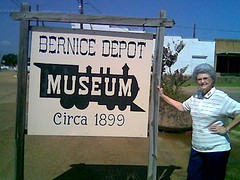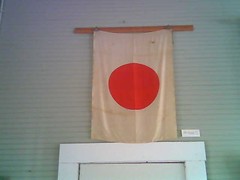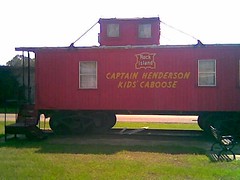Somehow, someway, as a boy I developed a passion for reading books related to American Indians and the West. I literally read every book related to those topics in two branches of Dallas libraries. Some say that the books we read as children define us as adults. Perhaps that’s true.
My interest in Native Americans began early, maybe subconsciously. The first book that I ever owned, was given to me by the doctor who performed brain surgery on me. My parents said that they were reading the book with me in the lobby and when they tried to take it away from me, I cried and wailed and my heart was so broken that the doctor gave it to me. This was not a happy time for my parents. They doctor had told them I wouldn’t live more than six months after the surgery. Now, half a century later, that scenario gives me much to think about (the doctor is dead now). I’ve always thought I’ve been living on borrowed time. I know this is one dynamic that drives my friends and those close to me crazy. Especially since the sudden death of my brother last summer, I’ve been more reflective on the subject of mortality. My parents are getting along in years, wearing out from a life of hard work, suffering from the afflictions of age, and I’ve not asked them their perspective of my continued existence. It has been one of the great “unsaids” between family members. I can still see love in their eyes though.
That book the surgeon gave me was my first book. It’s title is Famous Indian Chiefs, written by John W. Moyer (with the Chicago Natural History Museum) and illustrated by James L. Vlasaty. Publisher was M.A,. Donohue & Co. Chicago/New York. The copyright is 1957. The book talks about eleven Indian (in today’s politically correct jargon, Native American) chiefs: Red Jacket, Black Hawk, Tecumseh, Yoholo-Micco, Osceola, Red Cloud, Dull Knife, Sitting Bull, Geronimo, Chief Joseph, and Quanah Parker. There is a full color painting and pen and ink drawing illustrations for each chief. As soon as I get a scanner, I’m going to post each of these paintings. The book, my FIRST book, is one that I will never part with. Not for any amount of money.
All of my years of reading about the Native American world deeply affected me in these ways:
1. I became physical, perhaps even health conscious. Many Indians were runners, so I ran. I jogged early in the mornings. Did you know that many of them could outrun a horse in distance, could run 50 miles in a day, and I read and followed the training imposed on them. I never did reach 50 miles in a day. Most I did was 12 miles. Indian warriors took pride in showing no pain. I tried to emulate them.
2. I became a warrior. I studied fighting. I learned archery, made and threw spears at cardboard buffaloes, made war clubs, and studied the great battles between whites and Indians.
3. I became a survivalist. I learned to identify plants for food and medicine. I learned to trap and hunt. I was a Boy Scout so this fit right in with my interests. (achieved Eagle, Order of the Arrow, God and Country Medal, Fifty-Miler Award, Mile Swim, and a Bronze Palm). I went on survival camping trips with only a knife. I made pemmican, learned how to dry meat, start a fire with flint and steel, and many other skills most people today don’t have a clue about.
4. I learned Indian crafts. I learned to do bead-work, both on a loom, and hand sewing in the Plains Indian style. (Grey Owl is a great source of crafts if you’re interested. Their site is here: I made Indian costumes for Boy Scout ceremonies. The way I dressed as a teenager reflected my interest and passion to study the American Indians. I wore fringed moccasins to high school every day of my junior year, had a fringed buckskin jacket, and wore a beaded headband most days.
5. I watched every movie and TV show on American Indians I could find: Some of my favorites about Indians or with Indian characters are: Billy Jack, Bury My Heart at Wounded Knee, Winterhawk, Dances with Wolves, Last of the Mohicans, Renegade, Apache (1954 – a bad movie, but more realistic than the modern Geronimo movie) The Searchers (John Wayne) and many other movies whose titles I have forgotten.
6. I hunted arrowheads ( and spear points, etc.) on my uncle’s farm in Comanche, TX. (Monzelle O’Brien) I just found out that he passed away. Here is his obituary:
O’BRIEN
Hugh Monselle O’Brien, 95 of Comanche, died Thursday, July 3, 2008 at Comanche County Medical Center.
He was born on Mar. 27, 1914 in Austin to Hugh Marion O’Brien and Emily Gertrude (Bryant) O’Brien.
He was married to Lucille Johnson on Feb. 18, 1947 in Fort Worth.
O’Brien was a World War II veteran, an accomplished writer and a member of First United Methodist Church in Comanche.
He is survived by his wife; daughters Nancy Isham of Comanche, Karen Coplen of Comanche, Christy Fitzsimmons of Garland, Susan Daniel of Odessa and Becky O’Brien of Early; thirteen grandchildren, seven great grandchildren, one great great granddaughter, numerous cousins and many friends.
Funeral services were Sunday, July 6 at First United Methodist Church followed by burial at Taylor’s Chapel Cemetery.
Memorials may be made to the American Cancer Society.
7. I have continued to read about Native Americans, have researched, written many sources for information, and continue to write. Like my writing about the Civil War, not all of what I record is positive, but I hope it tells the truth.





